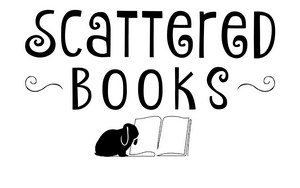
01 Dec Summary of A Christmas Carol – The Timeless Classic by Charles Dickens

Plot Summary
Set in Victorian England, “A Christmas Carol” tells the story of Ebenezer Scrooge, a miserly old man known for his greed and lack of compassion. On Christmas Eve, Scrooge is visited by the ghost of his former business partner, Jacob Marley, and three spirits – the Ghosts of Christmas Past, Present, and Yet to Come. These supernatural encounters take Scrooge on a journey of self-reflection, revealing the loneliness of his past, the sorrow caused by his present actions, and the grim future that awaits him if he does not change his ways. The experience profoundly transforms Scrooge, who awakens on Christmas morning with a renewed spirit of generosity and kindness.
Get your own copy or listen to the audiobook on Christmas Eve:
Themes
- Redemption: Scrooge’s transformation is a powerful message of hope and the possibility of redemption.
- The Spirit of Christmas: The novel celebrates the joy, warmth, and generosity associated with Christmas.
- Social Criticism: Dickens critiques the social injustices of his time, highlighting the plight of the poor and the responsibility of the wealthy.
Character Descriptions
- Ebenezer Scrooge: Initially a bitter, miserly old man, Scrooge evolves into a kinder, more compassionate person.
- Bob Cratchit: Scrooge’s underpaid clerk, Cratchit embodies kindness and familial warmth despite his hardships.
- Tiny Tim: Cratchit’s young son, Tiny Tim is a symbol of innocence and the harsh realities faced by the poor.
- Jacob Marley: Scrooge’s deceased business partner, Marley’s ghost warns Scrooge to change his ways.
- The Ghosts: Each spirit represents different facets of Christmas and plays a crucial role in Scrooge’s transformation.
The Three Ghosts of A Christmas Carol
Charles Dickens’ “A Christmas Carol” features three pivotal ghosts, each representing different facets of time and delivering profound lessons about life, empathy, and humanity.
The Ghost of Christmas Past
This ghost is often depicted as a mysterious and ethereal figure, embodying a blend of both youthful and aged appearances, symbolizing the past’s nature that is both distant yet ever-present. It takes Scrooge on a journey through his own past, showing him scenes from his childhood, his young adult life, and moments that shaped his current character. These memories often include both joyous and painful moments, like the loss of his love due to his growing obsession with wealth. The purpose of this ghost is to remind Scrooge of his lost innocence and the moments when he was more open-hearted and happy, contrasting sharply with the man he has become.
The Ghost of Christmas Present
This spirit is usually depicted as a jolly giant, clad in a green robe, symbolizing the abundance and generosity of the present Christmas spirit. The ghost shows Scrooge scenes of current Christmas celebrations, including the humble yet heartwarming Christmas observed by the Cratchit family. The most significant part of this journey is when Scrooge is confronted with the personifications of Ignorance and Want, two wretched children who hide under the robe of the Ghost of Christmas Present, emphasizing the social criticism aspect of the novella. The ghost’s role is to open Scrooge’s eyes to the joys of life and the suffering he has ignored, and to show the value of empathy and generosity.
The Ghost of Christmas Yet to Come
This ghost is often portrayed as a dark, shadowy, and ominous figure, shrouded in a black cloak, symbolizing the uncertainty and fear associated with the future. It does not speak but leads Scrooge through increasingly grim scenes of the future, including the death of Tiny Tim, the Cratchit family mourning, and people showing indifference or even joy at Scrooge’s own death. The ghost’s purpose is to instill a sense of fear and urgency in Scrooge, showing him the bleak future that awaits if he continues on his current path. It’s a stark warning about the consequences of a life lived without kindness or compassion.
Each of these ghosts plays a crucial role in Scrooge’s transformation, offering him insights into his own life and the impact of his actions on others. They are not just supernatural entities but also serve as metaphors for introspection, empathy, and the passage of time, central themes in Dickens’ enduring Christmas tale.
Book Analysis
Strengths:
- Narrative Technique: Dickens masterfully combines a straightforward narrative with vivid descriptions and memorable characters.
- Emotional Impact: The story’s emotional depth and moral message are compelling and impactful.
Weaknesses:
- Simplification of Characters: Some characters might seem one-dimensional, primarily serving the moral lesson.
Literary Devices:
- Symbolism: Characters and events are rich in symbolic meaning, reinforcing the story’s themes.
- Allegory: The story functions as a social and moral allegory.
Evaluation
Audience Suitability: Ideal for readers interested in classic literature, moral tales, and holiday stories.
Comparisons: “A Christmas Carol” can be compared to other Dickens works, like “Oliver Twist,” for its social commentary and vivid characterization.
Recommendation: Highly recommended for its timeless message and narrative charm.
Potential School Test Questions and Answers
- What is the main theme of “A Christmas Carol”?
Answer: The main theme is redemption and the transformative power of Christmas. - How does Scrooge change throughout the novel?
Answer: Scrooge transforms from a miserly, uncaring man to a generous, kind-hearted individual.
Product Details
- ISBN: 978-0486268651
- Page Count: 112 pages
- Publication Date: Original in 1843, various editions available
- Publisher: Various publishers
- Genre: Classic Literature
- Reading Age: 12 and up
Awards and Accolades
A Christmas Carol is recognized as one of Dickens’ most famous and enduring works, though specific awards for classic literature of this era are not typically assigned.
Other Books in Series
While not part of a series, “A Christmas Carol” inspired numerous adaptations and similar themed stories in literature and media.
About the Author
Charles Dickens, an eminent Victorian writer, is known for his vivid storytelling and social commentary. Other best-sellers include “Oliver Twist,” “Great Expectations,” and “David Copperfield.” He received acclaim for his keen observation of character and society.
Bookshop.org helps to support independent booksellers. Please purchase “A Christmas Carol” on Bookshop.org: https://bookshop.org/a/1289/9781936830886.
Other Reviews








